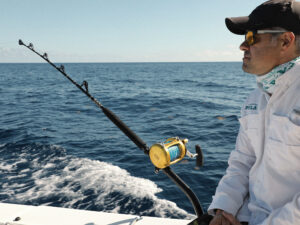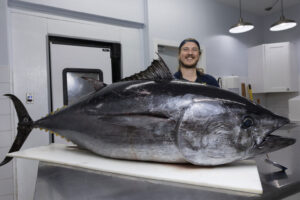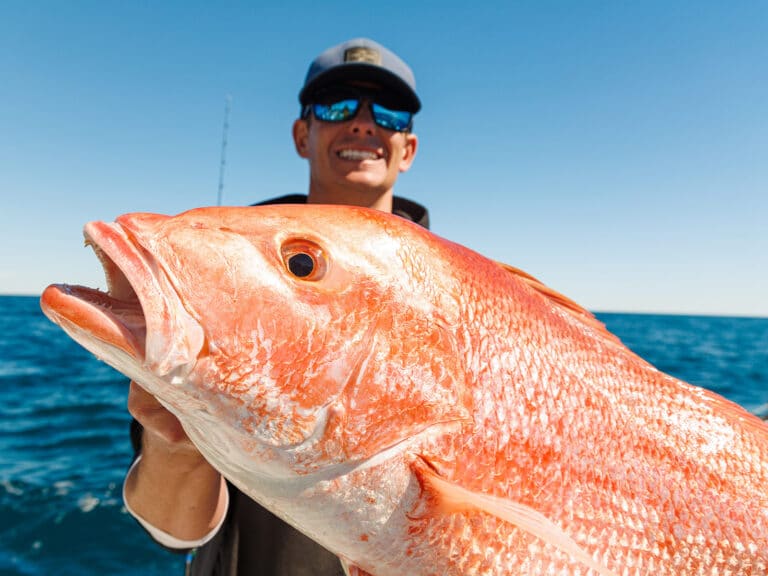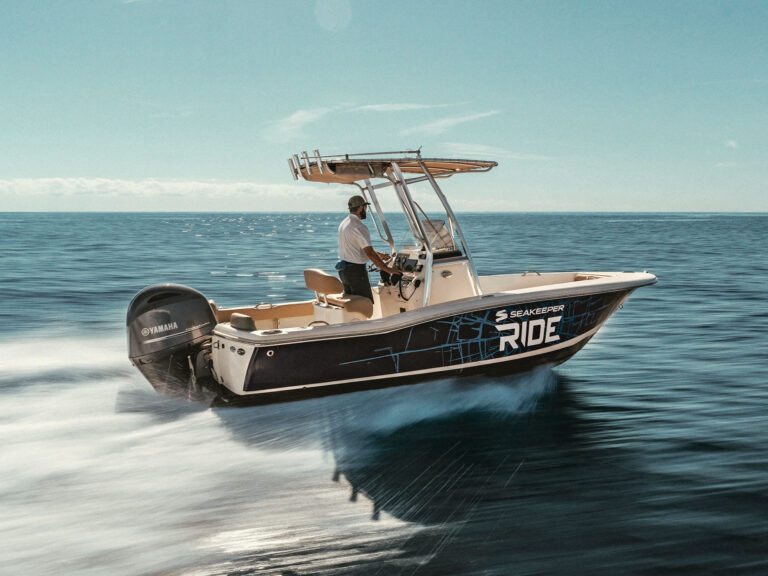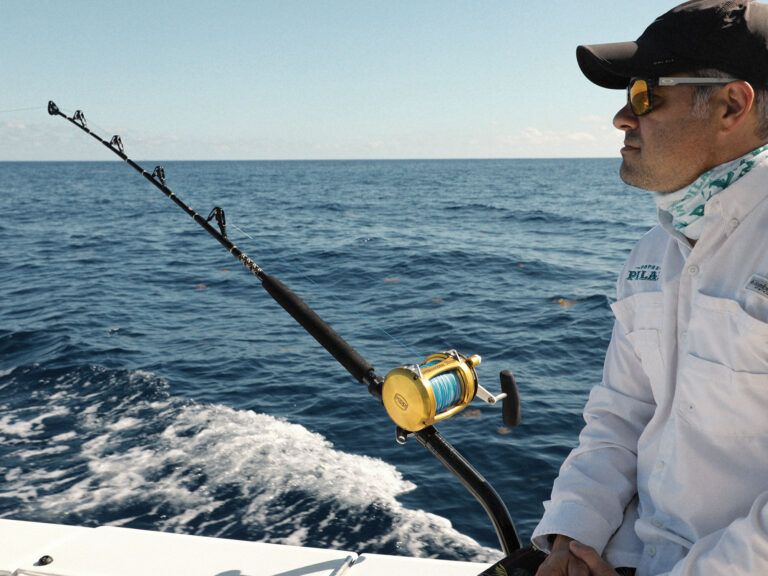
While some anglers find joy in a marsh teeming with redfish or trolling seamounts alive with wahoo, my happy place is on the pulpit of a headboat off the coast of New England in the blistering cold of a winter morning, chasing the Atlantic pollock.
Tried and true presentations like hi-low bait rigs may remain the gold standard for filling a cooler, but experience tells me there are lighter tackle alternatives that are equally as effective and better showcase the brute strength and sportiness of the pollock.

Pollock 101
Pollock thrive in the cold waters of the Northwest Atlantic, particularly the Gulf of Maine. Members of the cod family, pollock feature a chin barbel and display a greenish hue above the lateral line, contrasting strongly with their pale stomachs.
After pollock eggs are fertilized, they rise to the surface and float. Newly hatched fish feed heavily on plankton before moving back to deep water. After a few months, juvenile fish head inshore to shallow rocky areas before finally moving back into offshore zones as deep as 1,500 hundred feet. Their diet consists mainly of krill, herring, mackerel, squid and a number of crustaceans, while larger specimens also prey on smaller pollock.
Pollock are often grouped with groundfish like cod, haddock, white hake and cusk. However, this can be misleading, as they are best classified as semi-pelagic, meaning they can be found throughout the lower part of the water column and not just close to the ocean floor. They grow heavier than 30 pounds, with average-size fish weighing between 5 and 12 pounds.

Light Tackle Tactics
As a fishing-obsessed teenager with a fresh license, the most affordable way for me to get offshore was by hopping on a party boat. Growing up in New England, there was no shortage of options, with plenty of boats specializing in deepwater groundfishing.
It did not take long before I was ready to ditch the ultra-heavy gear supplied by the boats for lighter tackle alternatives. Around that time, I was exposed to the content of ace Cape Cod multi-species guide, Robert Lowell, and his slow-pitch approach to pollock. According to Lowell, pollock is an ideal species to pursue via slow-pitch, as they will eat whatever is in front of their face, and this style of jigging can create a very exciting reaction-style bite. As mentioned above, a good pollock school can reach far above the bottom, meaning anglers can use a variety of cadences and pitch lengths while staying in productive water.
While there is no shortage of specialized slow-pitch tackle systems on the market, Lowell opts to keep things simple, “We use similar gear to fluke fishing, with rods that have super forgiving parabolic action so you can work the jig and keep fish buttoned.” A standard slow-pitch setup on Lowell’s boat consists of a Shimano Tranx conventional reel and a four-powered custom rod that is a bit longer than the standard 6- to 7-foot models on the market today. The added length keeps the action as far away from the boat as possible to avoid tangles with other anglers.

On the business end, most slow-pitch style jigs will work. Throughout the northeast, a surefire staple is the Hogy Sand Eel Jig outfitted with a teaser assist hook. As with most jigging, adjusting jig weight to account for current and depth is key to limiting line scope and staying as vertical as possible. Another suggested jig option worth noting from Lowell is the Hogy Jig Biki Rig, which includes tangle-free teaser flies above a slow-pitch jig. This setup allows anglers to catch multiple fish on one drop or even add bait during the odd tough bite. Additionally, Lowell urges anglers to be as efficient as possible on the water, “We use a split ring to connect the jig to the assist hook, making it easier to change jigs without needing to retie.”
Once hooked on light tackle, pollock are known for extremely violent headshakes and powerful rips toward the bottom. When running multiple assist hooks, it is very common to hook two fish on one jig, providing a real treat to seasoned and entry-level anglers alike.
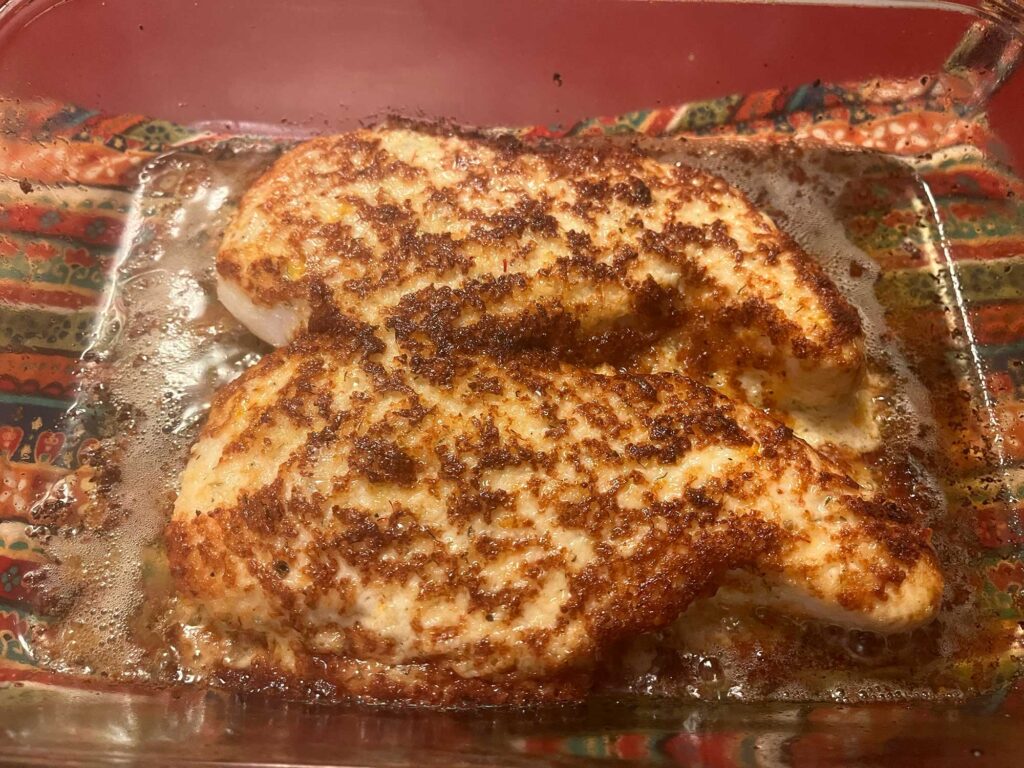
Good Eats
No matter where you are located, I bet you have consumed pollock in the form of fish stick-style products or a commercially prepared fish sandwich due to the big-market appeal of their mild flavor and flaky texture. I urge folks to stray from burying pollock fillets under heavy batter. My favorite preparation method involves a light coating of breadcrumbs followed by a few minutes underneath the broiler. I guarantee you will find a sweet, almost buttery, flavor that will appeal to even the most hesitant fish eaters in the family.

